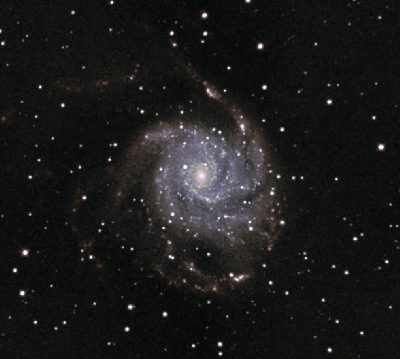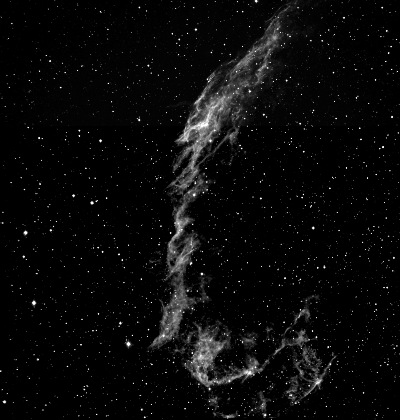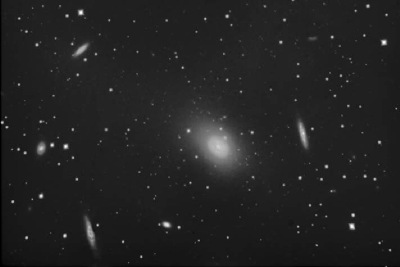
 |
 |
 |
 |
 |
 |
 |
 |
 |
This page last updated 10-26-09
 Object Data: NGC 7000, the North America
Nebula, is located in the constellation of Cygnus. It is a very large
area of emission nebulosity extending some 2.5 degrees to the east of
Deneb. It was discovered in the early 1890s during experiments into wide field
astrophotography.
Object Data: NGC 7000, the North America
Nebula, is located in the constellation of Cygnus. It is a very large
area of emission nebulosity extending some 2.5 degrees to the east of
Deneb. It was discovered in the early 1890s during experiments into wide field
astrophotography.
 Emission Nebula Sh2-101 in Cygnus. Located a couple of degrees SW of the Crescent Nebula. Back
in 1962, a strong X-ray source was identified in Cygnus. The star labelled above with the mouseover (9th Mag. HDE 226868)
was identified by Tom Bolton, using the 74 inch telescope at the David Dunlop Observatory, as a black hole candidate and
the source of the X-ray emissions. Cygnus X-1 is a binary system, with the black hole orbiting HDE 226868. It is believed
to be between 7 and 13 solar masses with an orbital period of 5.6 days.
Emission Nebula Sh2-101 in Cygnus. Located a couple of degrees SW of the Crescent Nebula. Back
in 1962, a strong X-ray source was identified in Cygnus. The star labelled above with the mouseover (9th Mag. HDE 226868)
was identified by Tom Bolton, using the 74 inch telescope at the David Dunlop Observatory, as a black hole candidate and
the source of the X-ray emissions. Cygnus X-1 is a binary system, with the black hole orbiting HDE 226868. It is believed
to be between 7 and 13 solar masses with an orbital period of 5.6 days.
 This is NGC 5457 or Messier 101,
in Ursa Major.
It has several extremely luminous star-forming (H II) regions in the
outer spiral arms, some sporting their own NGC numbers. It dominates
a small group of galaxies, with some of its neighbors such as NGC 5474
showing wear and tear attributed to the tidal effects of M101 M101 is about 22 million
light-years away.
This is NGC 5457 or Messier 101,
in Ursa Major.
It has several extremely luminous star-forming (H II) regions in the
outer spiral arms, some sporting their own NGC numbers. It dominates
a small group of galaxies, with some of its neighbors such as NGC 5474
showing wear and tear attributed to the tidal effects of M101 M101 is about 22 million
light-years away.
 NGC 6995 is part of the bright nebulae Veil Nebula, and the other nebulae are NGC 6960, 6979, 6992 in the constellation Cygnus, thought to be remnants of a
supernova i.e., of the explosion of a star probably 10,000 years ago.
The Loop, a strong source of radio waves and X-rays, is still expanding
at about 100 km (60 miles) per second. It lies about 1,800 light-years
from Earth.
NGC 6995 is part of the bright nebulae Veil Nebula, and the other nebulae are NGC 6960, 6979, 6992 in the constellation Cygnus, thought to be remnants of a
supernova i.e., of the explosion of a star probably 10,000 years ago.
The Loop, a strong source of radio waves and X-rays, is still expanding
at about 100 km (60 miles) per second. It lies about 1,800 light-years
from Earth.

